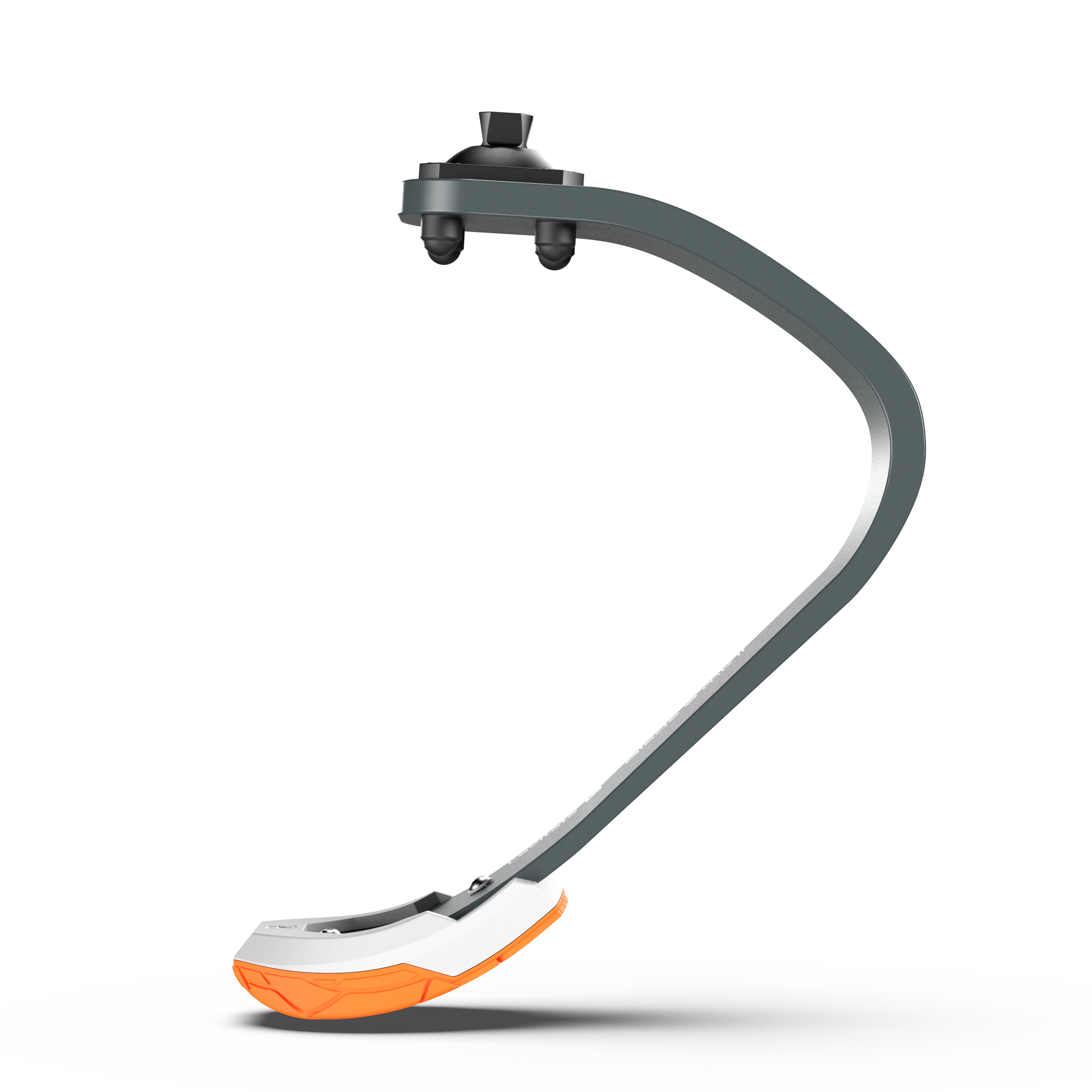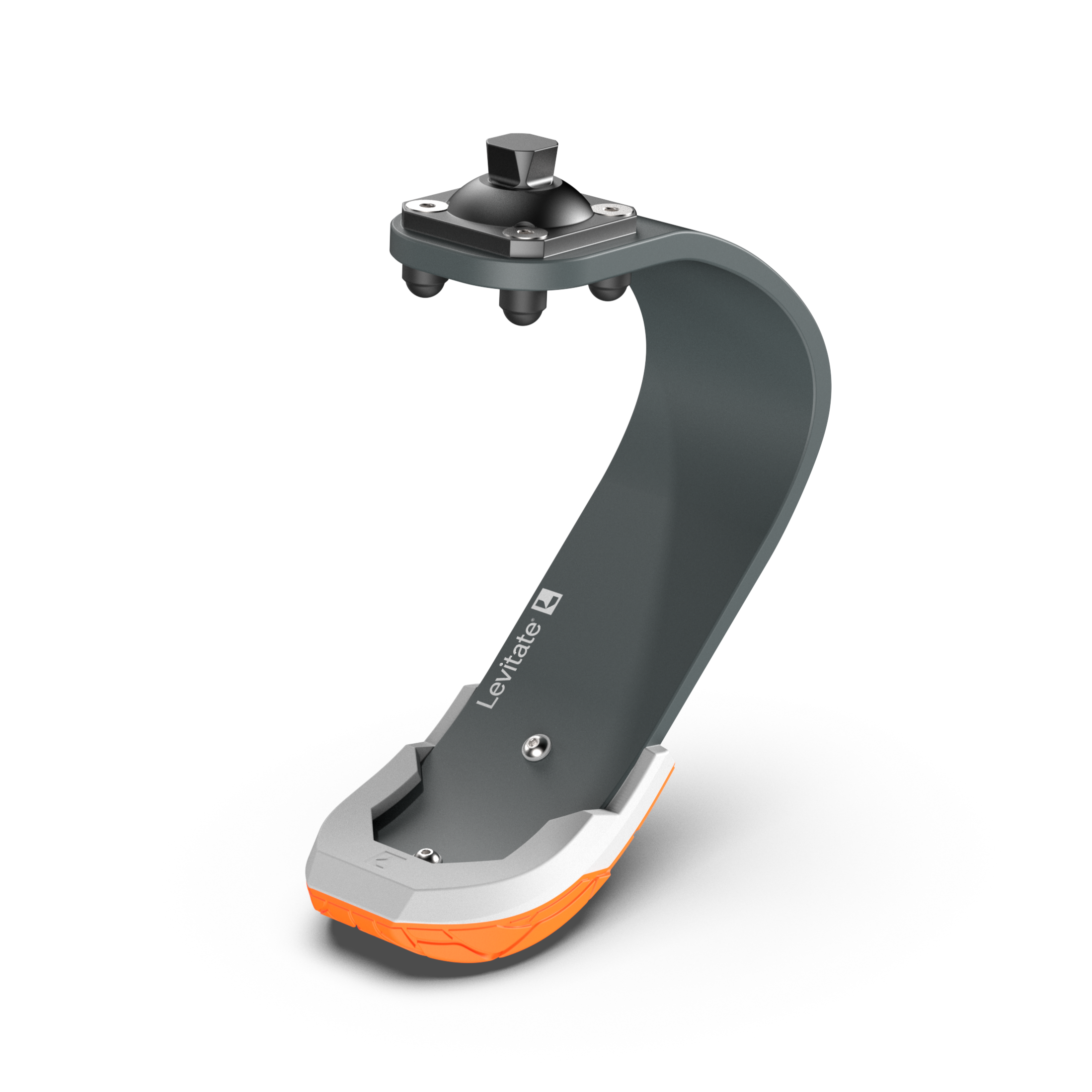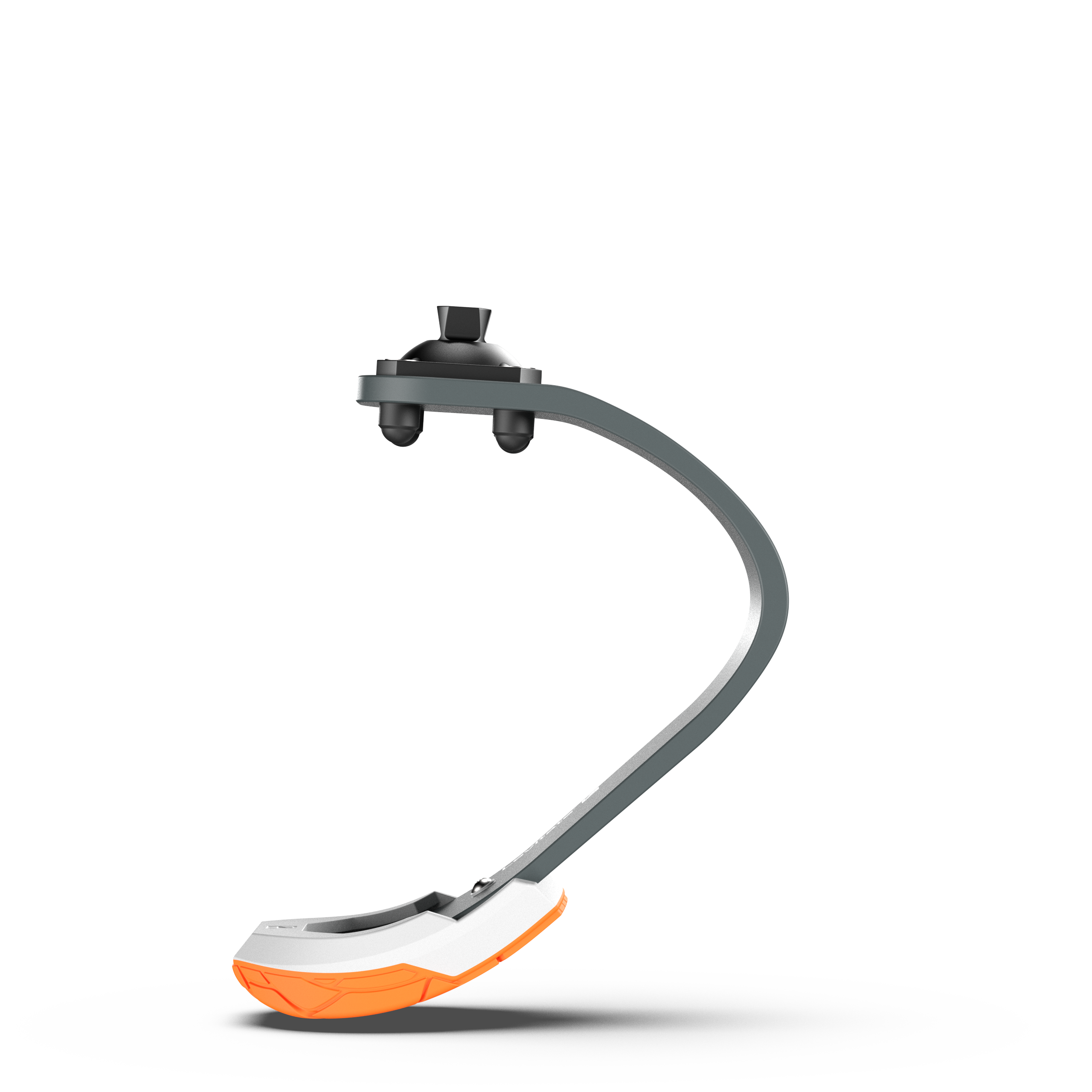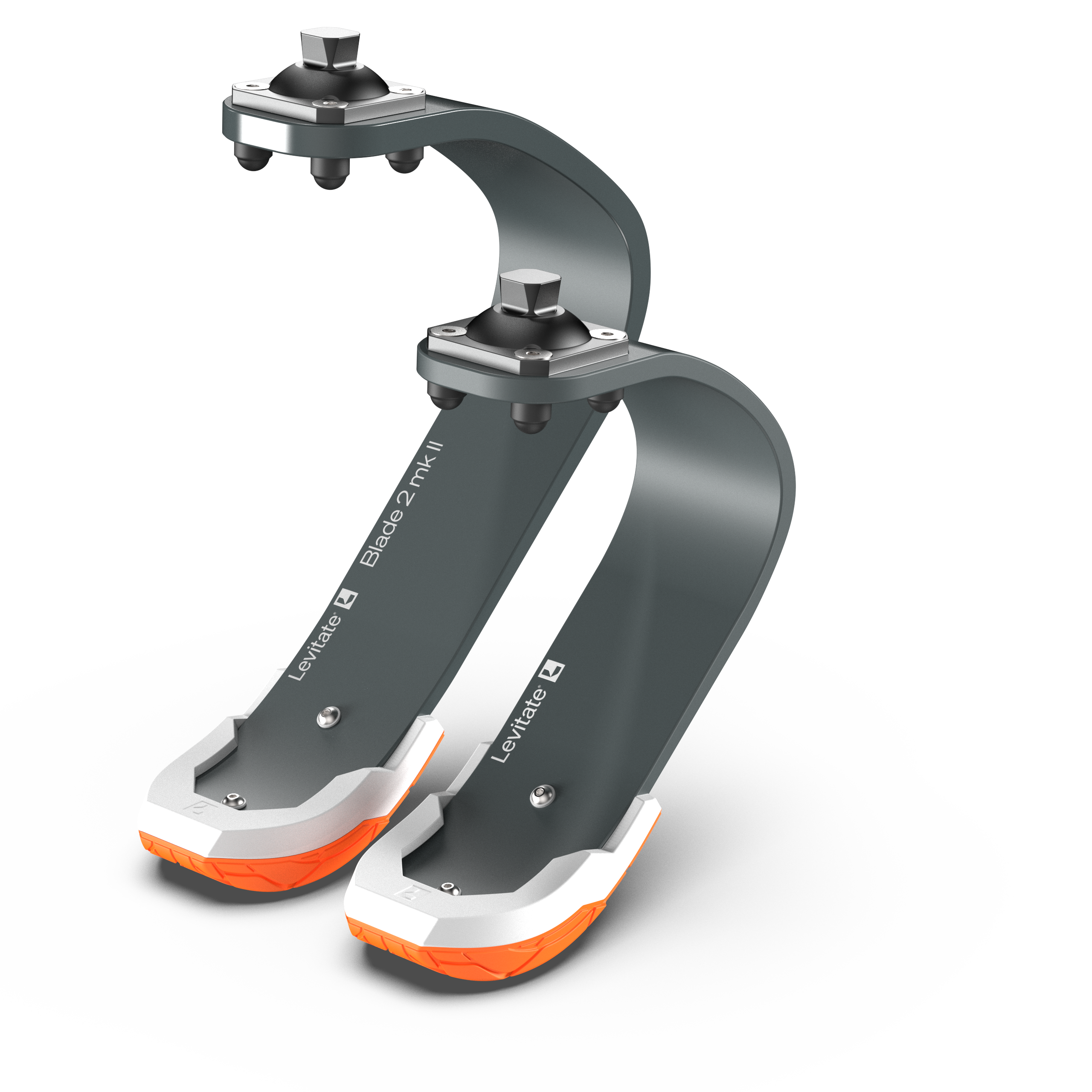
BLADE SERIES
INTRODUCING THE BLADE SERIES
A running blade designed for everyone, not just elite athletes. Built with fiberglass composite for smooth energy return, it offers easy alignment, a shorter build height, and interchangeable soles for comfort and control.
Whether you’re sprinting or jogging, the Levitate Running Blade makes running more accessible than ever.
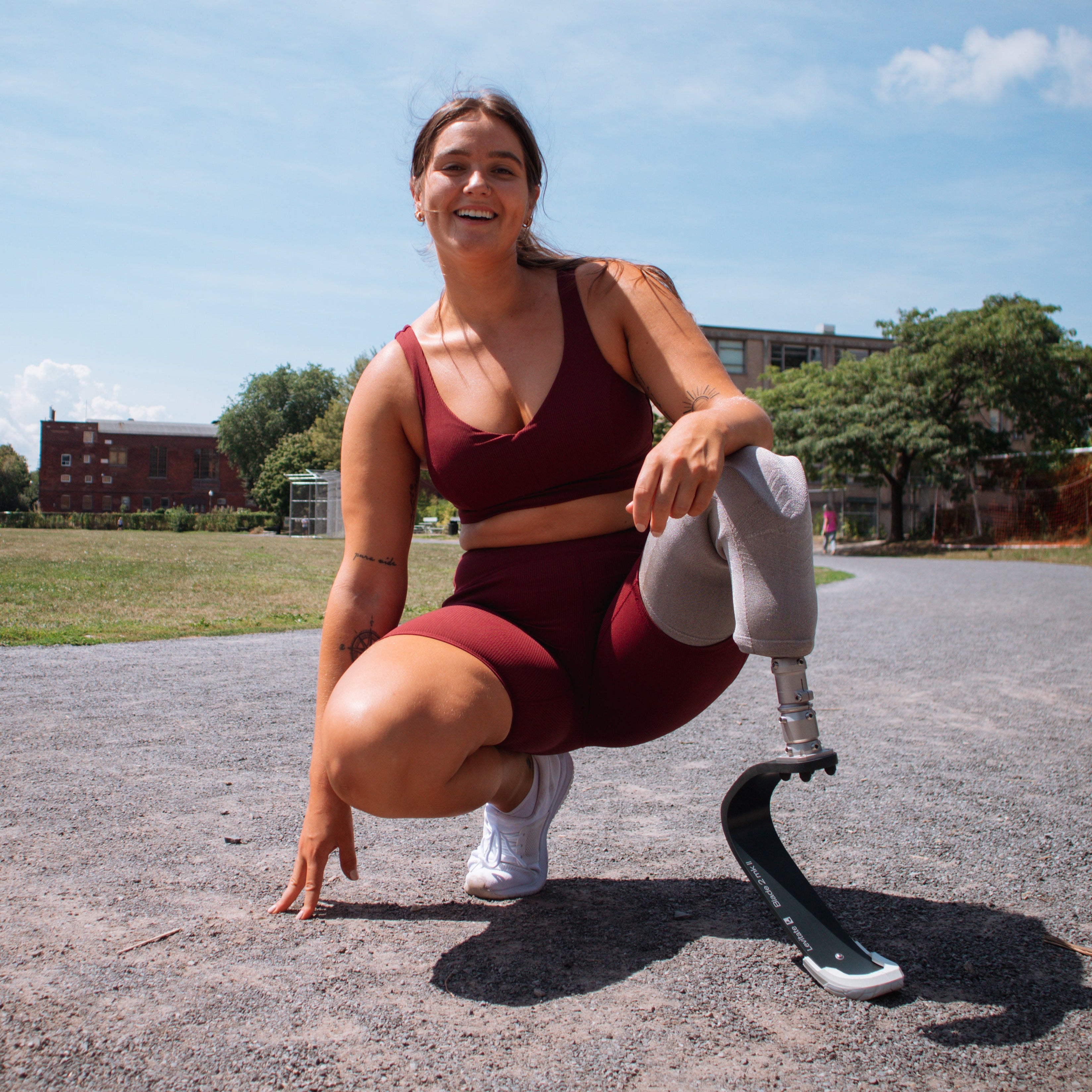
Run Freely
The Levitate Running Blade makes running accessible to everyone—not just elite athletes. Its shorter build height and optimized toe length provide better balance, control, and comfort, making it ideal for beginners and experienced runners alike.
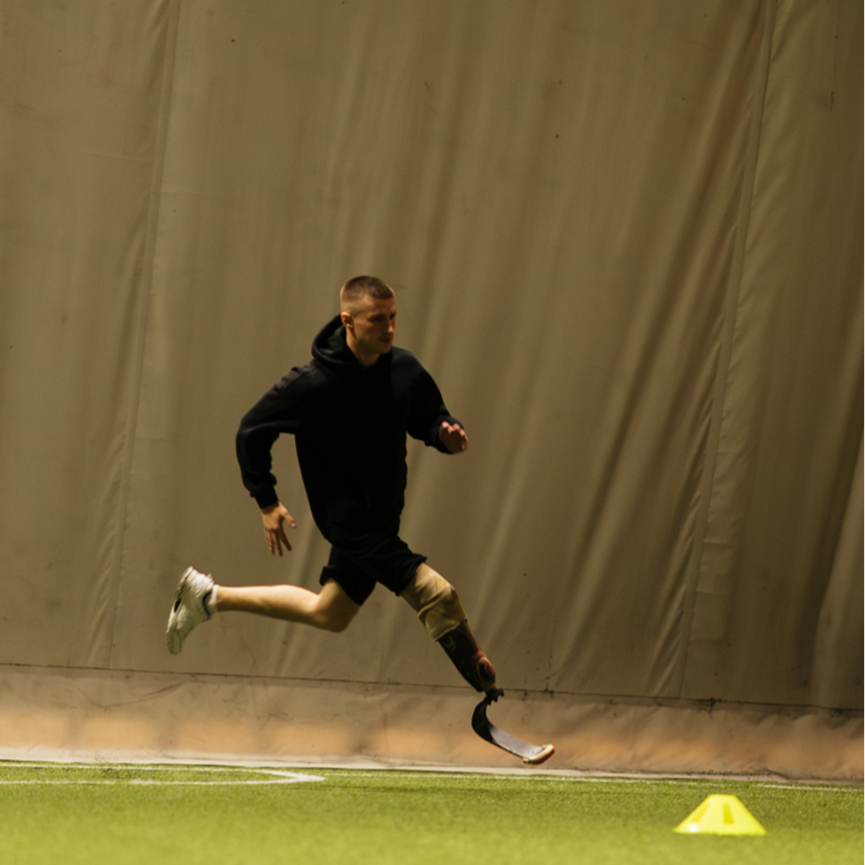
Smooth Energy Return
Crafted from high-performance fiberglass composite, the blade delivers a progressive energy return throughout the stride. Unlike carbon fiber blades that require a high cadence, this design ensures a smooth, controlled push-off for jogging, sprinting, or casual runs.
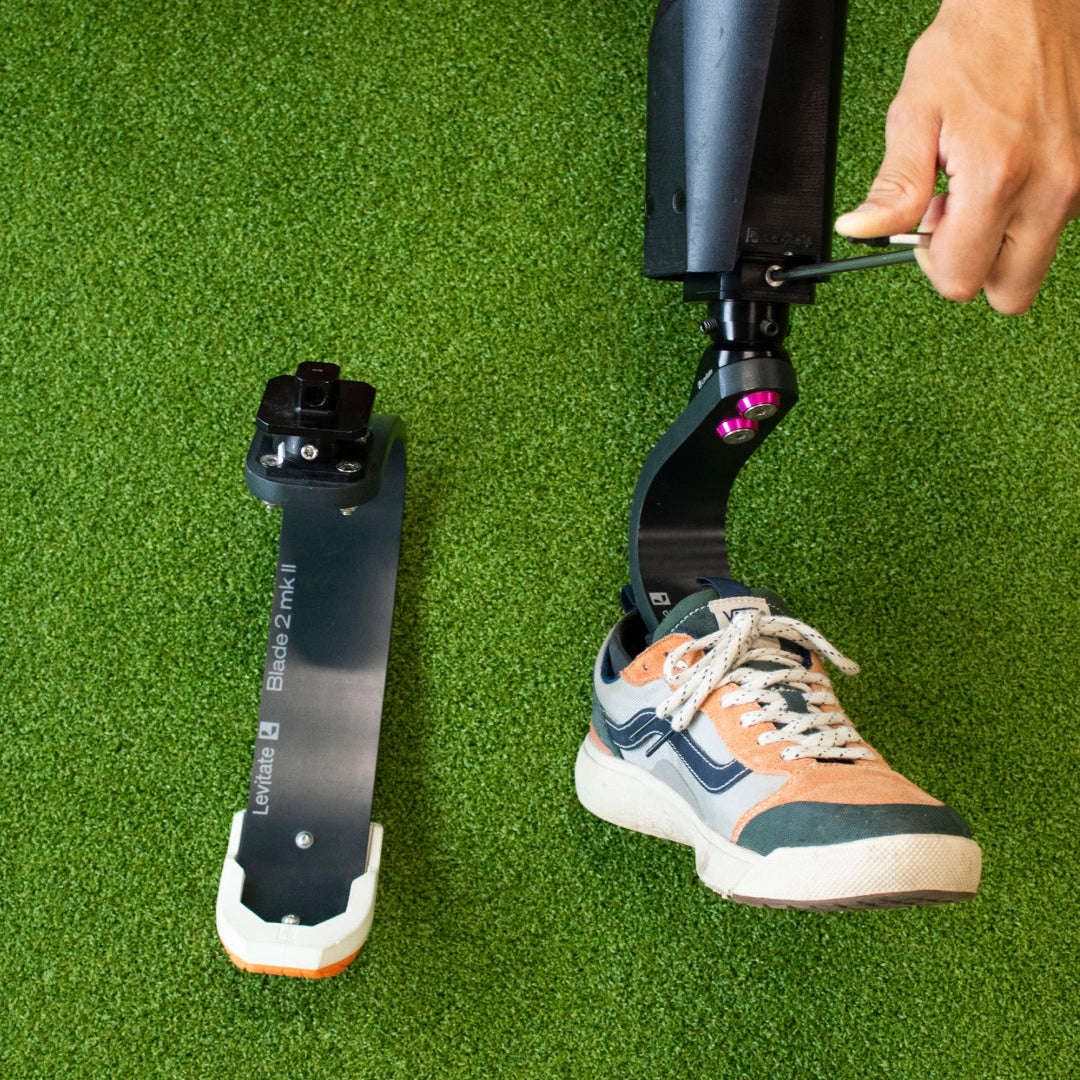
Seamless Adaptibility
Designed for real-world runners, the flat-top design allows easy alignment, while the interchangeable sole system offers grip and durability across various terrains. Paired with the Levitate Quick Change Adapter, switching between your everyday foot and blade is seamless.
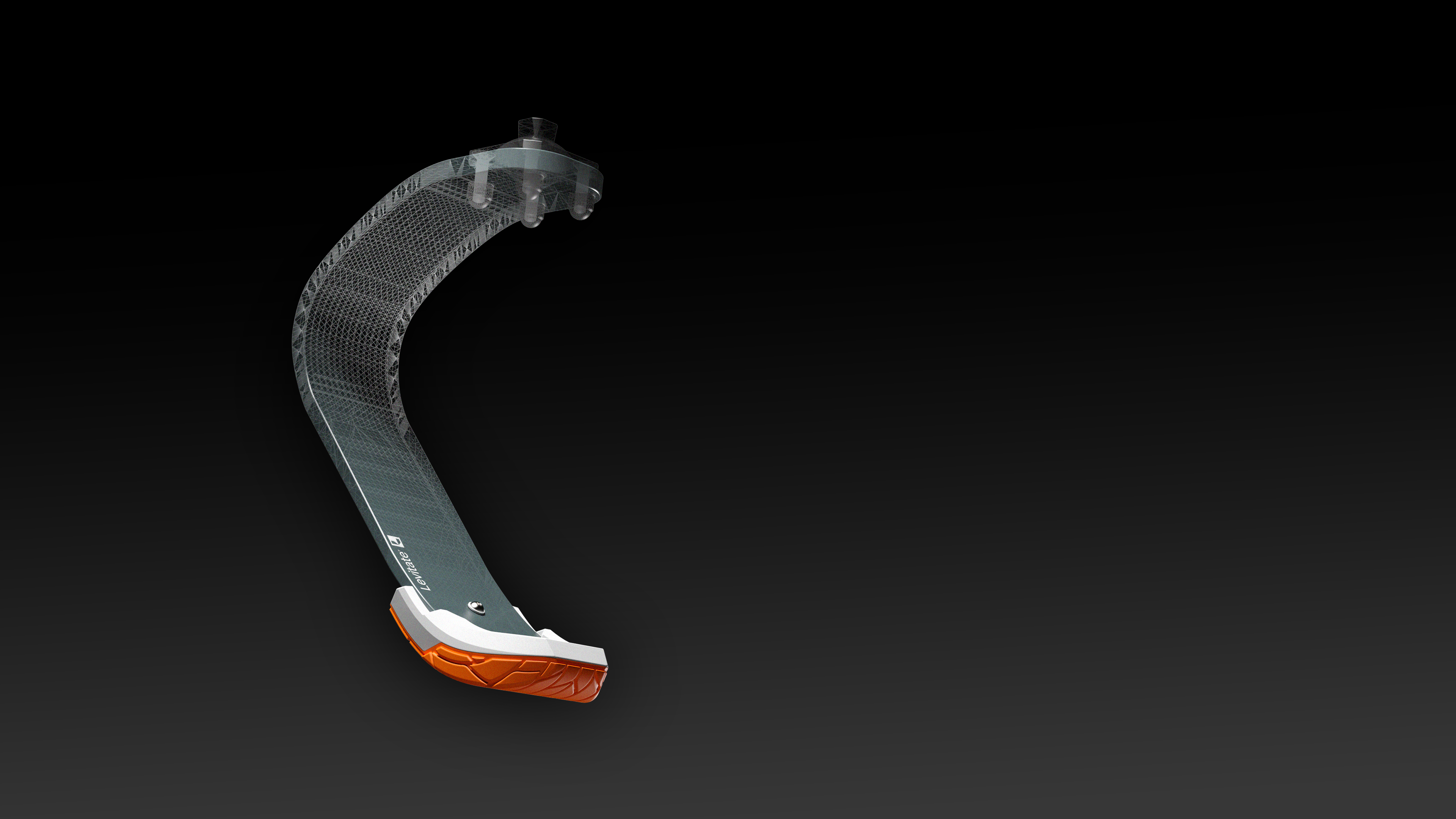
Designed for Everyone
The Levitate Blade makes running accessible to all amputees, not just elite athletes, offering comfort for any fitness level.
Perfect Fit
With build heights of 10” and 8”, the Levitate Blade accommodates a variety of amputees, ensuring a more comfortable experience
Compression for Symmetry
The Levitate Blade’s 2.5 cm compression ensures perfect symmetry during running, balancing your body while standing still.
Easy Sole Swaps
Interchangeable soles offer customizable grip and durability, allowing quick replacements to meet your specific running needs.
Balanced Performance for Everyday Athletes
The Levitate Blade is built for everyday athletes, featuring a more flexible fiberglass construction that provides a smooth and controlled energy return. Unlike carbon fiber blades that require a high cadence to activate their energy return, Levitate’s fiberglass allows for a more balanced and natural stride. This flexibility makes running feel more comfortable, reducing strain and making it easier to control movement at different speeds. A shorter toe length improves stability, helping users maintain balance, especially during slower runs or jogging. With a lower build height and optimized design, the blade is more accessible to a wider range of users, including those with longer residual limbs.

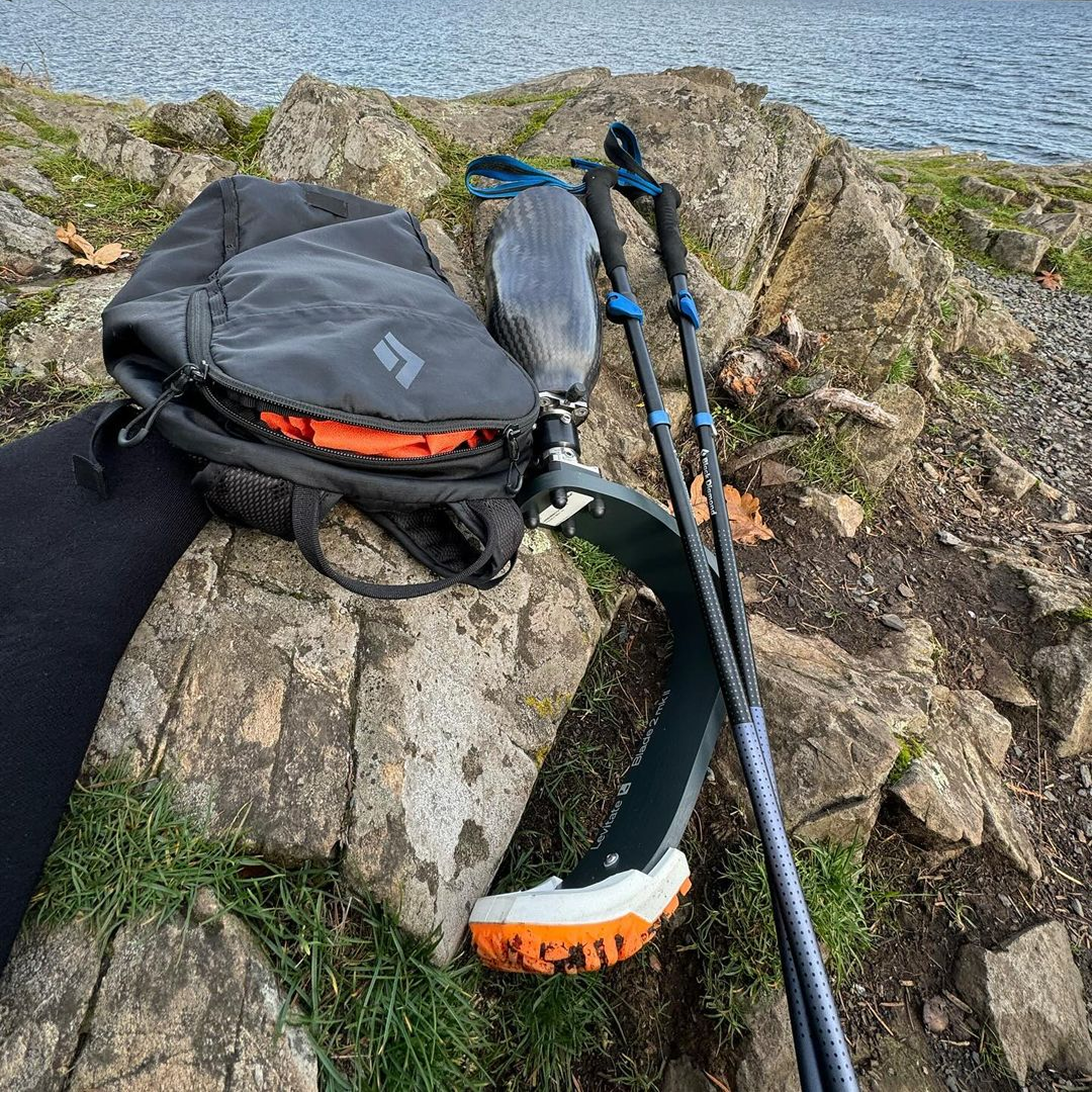
Weather-Ready
Built to weather it all, our Blade keeps you moving through rain, snow, or rough terrain. Its weather-resistant design ensures you stay dry and comfortable, no matter where you go.
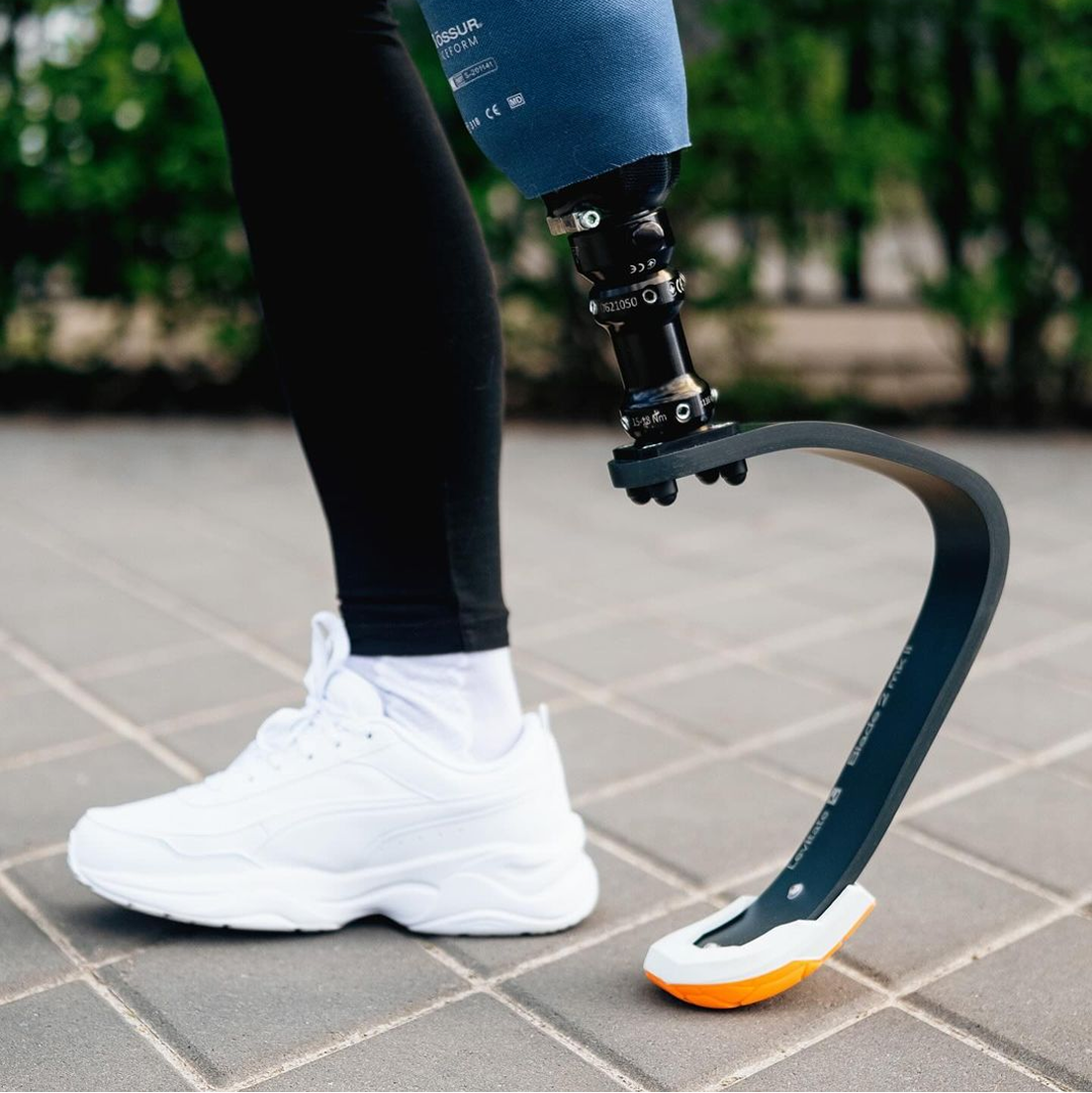
Nordic Simplicity
Minimalist design, maximum impact. The Forever Foot’s clean, modern lines offer effortless style that fits seamlessly with your everyday look.
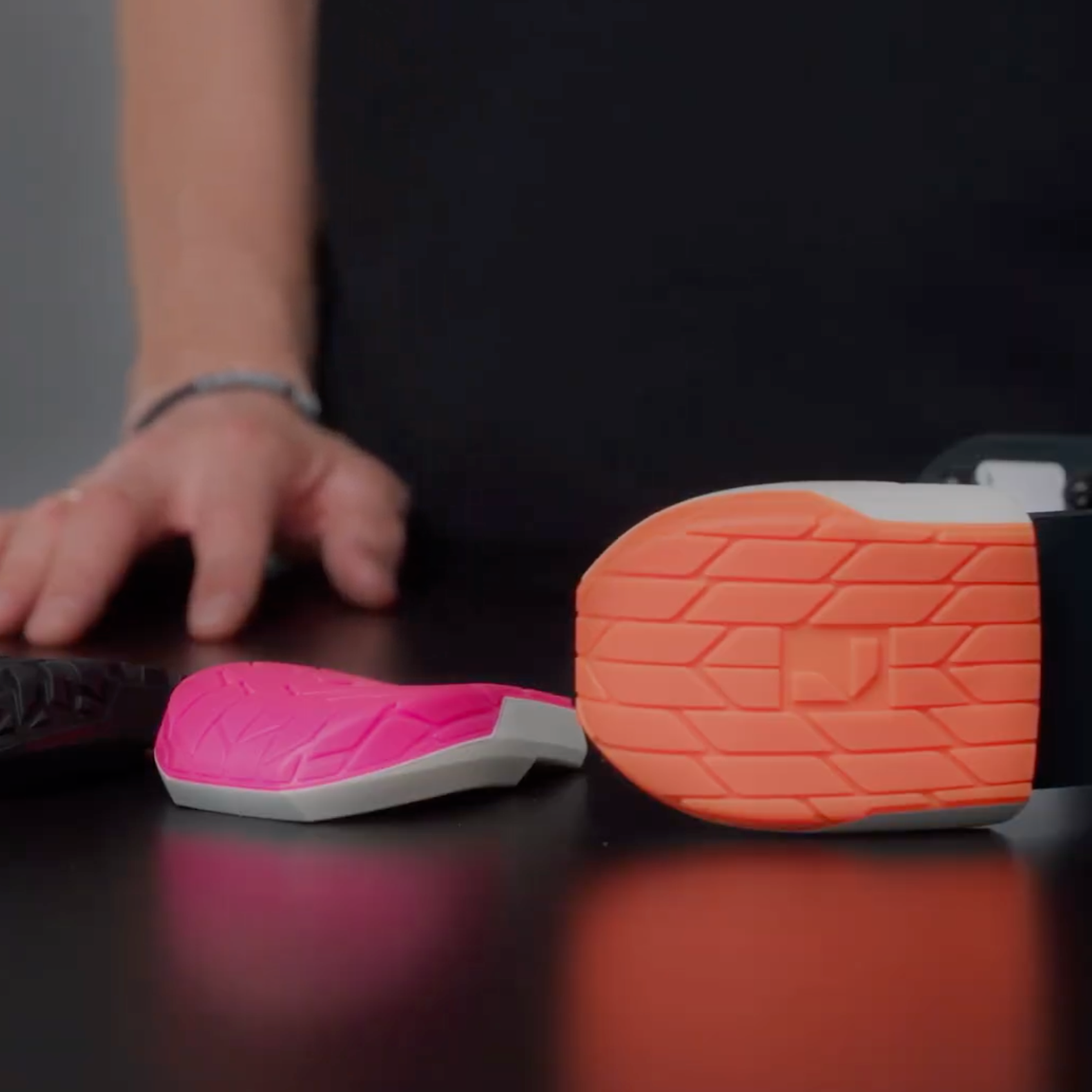
Interchangable soles
Choose between the Essential sole or the Gravel sole – each come in 4 colours – and switch between soles in a heartbeat.
And of course, It’s fully compatible with Levitate’s Quick-Change Adapter. So you can easily make seamless prosthetic foot transitions.

Wanna know more?
Watch our explainer video about the Levitate Blade Forever Series.


Need help?
FAQ
Both feet are made of fiberglass, but the Levitate Forever is an active everyday foot built for everyday life as well as sports that require heel support. The running blade is built solely for sports activities – particularly running.
Yes, you can wear the Blade in all kinds of weather.
Yes, the Blade can be used on all terrains. We offer two different soles. Our Essential Sole for urban terrain and recreational sports. And our Gravel Sole for more rugged terrain.
Talk to your local prothetist and have them to contact us.
We work with all prothetists and have local distributors in many markets.
Info for Professionals
Key Features
The Levitate Blade Foot is engineered to offer an exceptional blend of comfort, stability, and performance, perfect for both everyday use and high-impact activities. Built with Levitate's signature fiberglass composite, it provides smooth, controlled energy return throughout the stride, whether you're jogging, sprinting, or walking.
Designed to accommodate a wide range of users, the Blade Foot comes in two sizes: 10" and 8", with support for users ranging from 50 kg (110 lbs) to 125 kg (275 lbs) for the 10" blade, and up to 90 kg (198 lbs) for the 8". This ensures a perfect fit tailored to weight and activity level, offering maximum performance and longevity.
The 10" Blade Foot is shorter than many high-performance blades on the market, making it more accessible for those with longer residual limbs. A unique feature of the Levitate Blade Foot is its shorter toe length, improving balance and comfort, particularly for slower runs, jogging, or beginners.
Thanks to its flat top design, alignment is easy to adjust using offset adapters, allowing for fine-tuning without compromising build height. The foot also incorporates a 2.5 cm (1 inch) height difference to account for compression during high-impact activities, ensuring symmetry when standing still.
With its durable, interchangeable soles, the Levitate Blade Foot provides excellent grip and longevity. When a new sole is needed, simply swap it out for a fresh one, ensuring optimal performance at all times.
This blade is compatible with the Levitate Quick Change Adapter, enabling users to effortlessly switch between their everyday foot and running blade without requiring socket adjustments. With its sleek and sporty design, the Levitate Blade Foot empowers users to move with confidence, whether they're hitting the pavement or enjoying a day-to-day activity.
Product Specifications
K-Level: K3 and K4
Impact Level: Moderate and High
Amputation Level: Transtibial and transfemoral
Patient Weight Maximum: 125 kg (275 lbs)
Characteristics: Lightweight fiberglass construction, shorter 10" and 8" options, smooth energy return, full-length toe lever, optimized for balance and comfort.
Waterproof Rating: Built for exposure to fresh, salt, and chlorine-treated water.
Reimbursement Code: Suggested L-code




